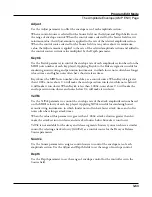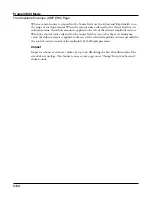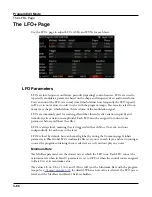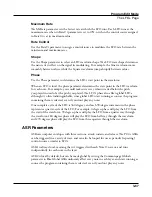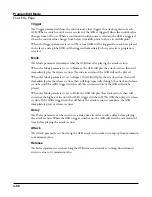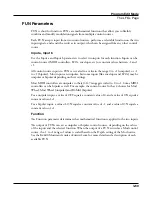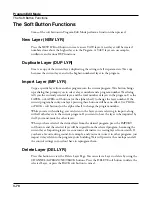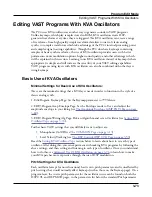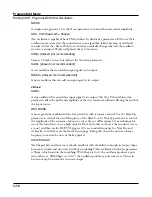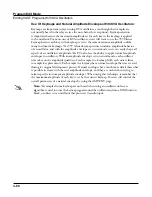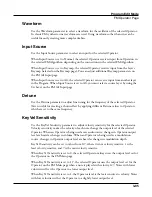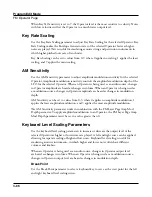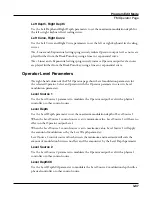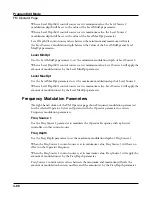
Program Edit Mode
Editing VAST Programs With KVA Oscillators
3-75
Anti-Aliased Oscillators
Aliased Oscillators
Size
Name/Type
Size
Name/Type
1 Block
LPNOIZ (noise + low pass filter)
1 Block
SINE
2 Blocks
SINE
SAW
SINE+
TRI
SAW
SQUARE
RES NOISE (noise + low pass
filter with resonance)
NOISE
SQUARE
SINE+
3 Blocks
PWM (Pulse Width Modulation)
SAW+
4 Blocks
SYNC SAW
NOISE+
SUPER SAW
SW+SHP (Sa Shaper)
TRIPLE SAW
2 Blocks
SHAPED SAW
8 Blocks
SYNC SQUARE (master) >>,
>>SYNC SQUARE (slave)
(4 blocks each)
PWM (Pulse Width Modulation)
Setting Up The Sync Square Oscillator
The Sync Square oscillator is actually comprised of two oscillators, a master and a slave, set
up to emulate the way sync square oscillators worked on classic analog synthesizers. To create
a program using Sync Square, select Program 2046 Editor Template. Select “none” on the
KEYMAP page. Select “user” on the AMP ENV page for an amp envelope. On the ALG
page, select Algorithm 5 at the top of the page. Use the cursor buttons to select the function
block and use the alpha wheel to select the “SYNC SQUARE (master) >>” function. Next,
press the << soft button to change soft button pages until you see “DupLyr.” Press DupLyr to
duplicate the layer, creating layer 2. In layer 2, on the ALG page, change the function block
to “>> SYNC SQUARE (slave)”, and set the Alt Input parameter to “Layer 1.” The final step
is to go to Layer 1’s DSP CTL page and turn the Level parameter all the way down, to -96dB
(this ensures that you will only hear the output of the slave oscillator on layer 2, which is the
intended function of Sync Square).
Now the Sync Square oscillator should be working. The “Syncoff” parameter, Sync Offset, is
the main parameter for shaping the tone of this sound. Syncoff sets the sync offset between
the master and slave square waves in each corresponding oscillator, which changes the shape
of the waveform output by the slave oscillator. The Sync Square oscillator is most expressive
when the Syncoff parameter is modulated during performance. Use the DSP MOD page to
assign an envelope or continuous controller like the Mod Wheel for this parameter to hear
The DSP Modulation (DSP MOD) Page
for details on setting up modulation and other ways to control parameters, and
The Envelope 2 (ENV2) and Envelope 3 (ENV3) Pages
for details on using envelopes as
modulation sources). See
Advanced Use Of KVA Oscillators
below for some similar examples
of how to set and control modulation for oscillator specific functions and other parameters.
Summary of Contents for Flash Play PC4
Page 1: ... It s the sound Part Number 910587 002 Rev B ...
Page 9: ... ix MIDI Implementation A 1 Specifications B 1 Index I 1 ...
Page 289: ... 8 40 ...
Page 328: ... 10 7 ...



